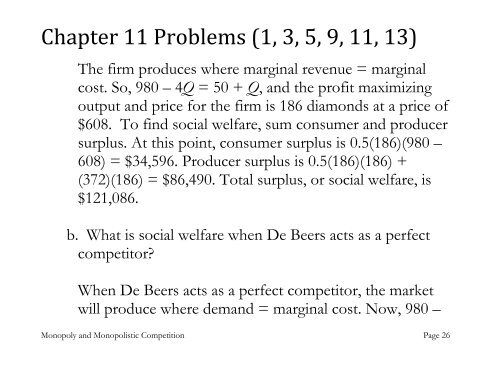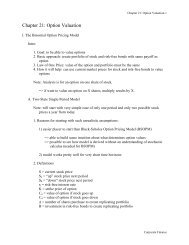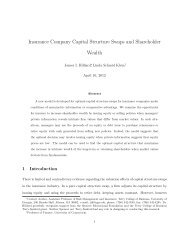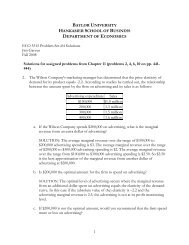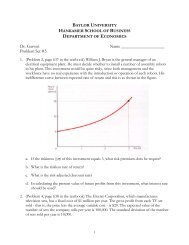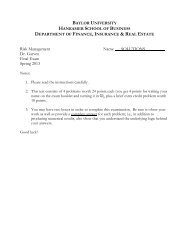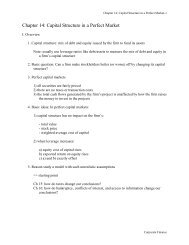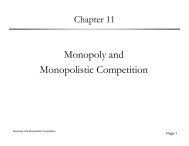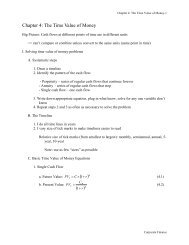Monopoly and Monopolistic Competition
Monopoly and Monopolistic Competition
Monopoly and Monopolistic Competition
Create successful ePaper yourself
Turn your PDF publications into a flip-book with our unique Google optimized e-Paper software.
Chapter 11 Problems (1, 3, 5, 9, 11, 13)<br />
The firm produces where marginal revenue = marginal<br />
cost. So, 980 – 4Q = 50 + Q, <strong>and</strong> the profit maximizing<br />
output <strong>and</strong> price for the firm is 186 diamonds at a price of<br />
$608. To find social welfare, sum consumer <strong>and</strong> producer<br />
surplus. At this point, consumer surplus is 0.5(186)(980 –<br />
608) = $34,596. Producer surplus is 0.5(186)(186) +<br />
(372)(186) = $86,490. Total surplus, or social welfare, is<br />
$121,086.<br />
b. What is social welfare when De Beers acts as a perfect<br />
competitor?<br />
When De Beers acts as a perfect competitor, the market<br />
will produce where dem<strong>and</strong> = marginal cost. Now, 980 –<br />
<strong>Monopoly</strong> <strong>and</strong> <strong>Monopolistic</strong> <strong>Competition</strong> Page 26


